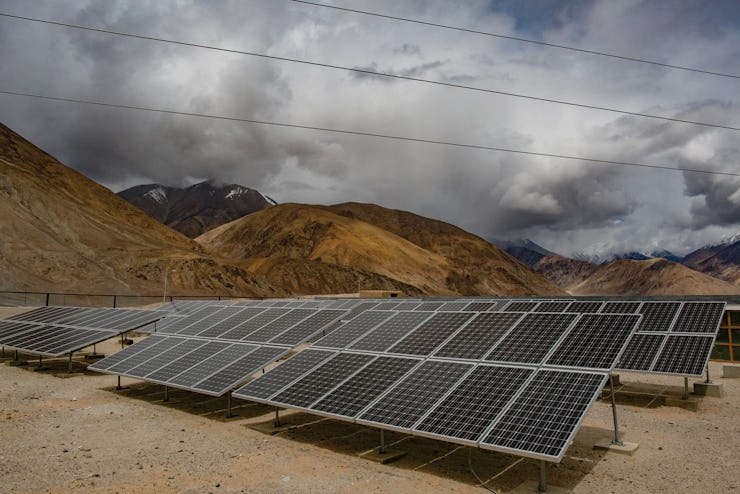How the Total Solar Eclipse Will Prepare Power Providers for the Future
The eclipse will be good practice for solar panel managers.

A solar eclipse, where the moon moves between the sun and the earth for a short period, sounds like terrible news for solar energy. But Monday’s eclipse — the first time in 99 years that one will pass over the contiguous United States — could prove an effective training procedure for the coming transition to renewable energy. Solar provides less than one percent of the country’s power supply, meaning providers can work around the dip by boosting natural gas and hydropower plants. By learning the procedure for supplementing solar now, though, providers can better prepare themselves for a future eclipse where the country relies far more on the source.
“We’re expecting solar power to be a much bigger part of our footprint by 2024,” Ken Seiler, executive director of systems operations for PJM Interconnections, which oversees the mid-Atlantic power grid, told the New York Times. “And we want to be ready.”
Beyond boosting alternative sources, state suppliers plan to work with one another to make up the shortfall. Duke Energy expects northern Californian solar to dip from 2,500 megawatts of production to 200 during the eclipse. The state has agreements with Arizona, Nevada and Oregon to transfer energy and even out fluctuations in production. A sudden drop in production will show whether this interstate agreement can help in emergencies.
It’s not the first time an eclipse has wrought havoc with energy supplies, and providers have studied past events for guidance on how to handle the Monday dip. In March 2015, an eclipse passing over Europe led to a drop in solar production. Before the eclipse, Germany’s solar production was at 21.7 gigawatts. During the phenomenon, it dipped to 6.2 gigawatts, before sharply rising after by 15 gigawatts in the space of an hour. Germany worked through the dip by using alternative power sources like nuclear and hydroelectric energy.
An array of solar panels in Germany.
“Good preparations paid off, we were able to handle all swings in production,” Ulrike Hoerchens, spokesperson for grid firm TenneT, told Reuters.
Across the continent, providers worked hard to keep the lights on. ENTSO-E, a Europe-wide body representing transmission systems operators, praised national firms for cross-border co-operation.
“Europeans are used to just push a button to switch the light on,” Pierre Bornard, chairman of the board for ENTSO-E, said in a statement after the event. “They tend to forget all the highly technical and complex systems and tasks needed to maintain a constant balance between generation and demand on an interconnected Power System.”
American providers have looked at Europe’s handling of the eclipse as a potential solution. While California has only struck a deal with a few states, it could lead to a more all-encompassing agreement that creates a full regional energy market. This could help states experiencing solar dips rapidly plug the gap. Eric Schmitt, vice president for operations at the California Independent System Operator, told the New York Times that Monday’s event will allow the state to “dip our toes in the water and see what that [market] looks like.”